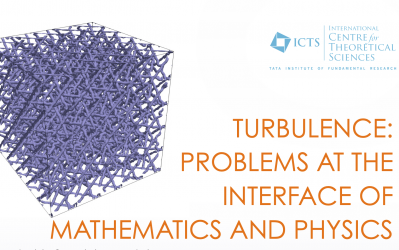The interest in turbulent flow goes back many centuries, but progress has been very slow until recently, from the point of view of ab initio theory (starting from the Euler or Navier-Stokes equations). In the 20th century, innumerable applications, e.g., in aeronautics or atmospheric and oceanic circulation, have been a major driving force for progress. In the last eighty years, thanks (a) to the scaling predictions of Kolmogorov in 1941 (K41), (b) to Onsager's 1949 (Ons49) criterion for anomalous energy dissipation, and (c) to Kraichnan's discovery of the inverse energy cascade for 2D turbulence, we have had the beginnings of a theoretical understanding. Furthermore, from experiments and numerical simulations of the last forty years, it is now clear that simple K41 scale invariance is broken and that a turbulent fluid displays multifractal scaling, which has been modelled by using various ad hoc probabilistic models, so far not deduced from the hydrodynamical equations. Recently, there has been an important advance in the ab initio mathematical understanding of turbulence: by using tools from Gromov's convex integration theory and closely related to Nash's paper on isometric embeddings, the construction of weak (distributional) solutions of the Euler equation for an incompressible, inviscid fluid has been achieved; these solutions have K41 scaling properties and possess Ons49 anomalous dissipation. This provides us with a novel framework for synthesizing turbulent flows with realistic dynamics. The time is now ripe to bring together a wide range of specialists for a new assault on the turbulence problem. We propose a cohesive mathematical, physical, and numerical strategy for constructing a large class of weak dissipative solutions with multifractal scaling, now genuinely deduced from the hydrodynamical equations. The investigation of the associated invariant measure (i.e., the long-time statistical properties) should reveal to what extent the scaling properties are characterized by universal exponents. Furthermore, there are indications that turbulence with (spatial) power-law forcing has at least two different regimes (dependent on the power-law forcing): one with scale-invariant statistics and one with multifractal statistics, i.e., broken scale invariance. These can be disentangled by using a variant of theories of spontaneous stochasticity, rough paths, and regularity structures, as recently applied to the Kardar-Parisi-Zhang (KPZ) equation. This two-week Discussion Meeting will first introduce participants to these developments and then have (a) specialised talks by leading experts in these areas and (b) focussed discussions between them to make progress on the solutions of the challenging problems here. This will be an in-person and new version of the program that was held online [https://www.icts.res.in/program/TPIMP2020] because of the pandemic. This program 2020 played an important role in developments in this area, in particular, in India. This Discussion Meeting will also have a similar effect.
ICTS is committed to building an environment that is inclusive, non-discriminatory and welcoming of diverse individuals. We especially encourage the participation of women and other under-represented groups.
Eligibility Criteria: Registration is open to advanced graduate students, postdocs and other researchers/faculties working in related areas.
 icts
icts res
res in
in

